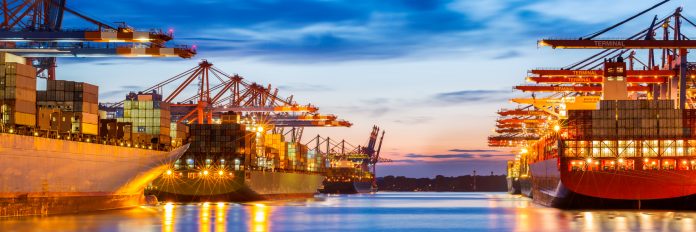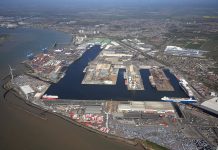Robert Ackrill and Piers Thompson from Nottingham Business School, explore the role and future of ports in the European Union concerning regional competitiveness and sustainability
The invention of the shipping container allowed the transportation of goods of all shapes and sizes in a uniform container, that could be stacked on ships and would fit onto trains and trucks.
It also revolutionised how ports functioned. In the 21st century, an estimated 90% of all trade globally is conducted by the international shipping industry.
Ports in the EU
In the European Union (EU), the proximity of countries (including major non-EU trading partners) means that ports play a smaller role in total trade, but even so, in 2023, just under half of total EU trade with non-EU countries was by sea, split 43.9% for exports and 51.0% for imports. That year, port calls in the EU represented 21.3% of all port calls globally. 88% of these carried an EU flag, and the EU owned 90%.
That said, a few key ports dominate such trade. Regarding total tonnage handled, Rotterdam (401.6mmt) and Antwerp-Bruges (242.2mmt) dominate. The third largest, Hamburg, handled (99.6mmt).
Despite the extensive inland waterways of Europe, only about 1.6% of trade between EU countries was conducted this way. The limited size of the craft and the relative inefficiency of inland ports compared with the major sea ports will be limiting factors.
Regional competitiveness
Where ports do exist, they can have a significant impact on regional competitiveness. Regional competitiveness is the extent to which a region can attract and retain important assets such as skilled labour, finance and innovative businesses.
More competitive regions can support higher-quality employment and higher living standards for their residents. This competition between regions should not be considered a winner-takes-all competition. EU regions are highly integrated, and other regions will benefit from trading and collaborating on innovation with these port regions.
Where ports play a vital role is both directly in enabling these interactions to take place, but also indirectly by acting as points where new people, and the ideas they bring, can enter the EU. Regions more accepting and welcoming of outsiders on average perform more strongly in terms of entrepreneurship, and productivity. Ports are, therefore, central not only to the movement of physical goods, but also vital nodes in a global network that transmits ideas and opportunities via the movement of people.
To maximise the potential from these flows of ideas, ports need to evolve to support new types of enterprises, such as those associated with digital, and green technologies, as they represent a vital part of the innovation or entrepreneurial ecosystem. Some EU port regions have been more successful in achieving this transformation, such as the inland port region of Eindhoven (the Noord-Brabant region in the
Netherlands).
Ports: The future and their sustainability
For ports to successfully adapt to future demands requires a systematic approach, as well as the provision of appropriate policy support and incentives, to help coordinate all key actors and stakeholders.
One key EU policy is the European Green Deal (EGD), a key part of efforts to decarbonise the EU economy. Globally, although maritime generates 3% of global greenhouse gas (GHG) emissions, on current trends, this could reach 10% by 2050.
Part of the EGD is a target of a 55% reduction in emissions by 2030. All ships above 5,000 gross tonnes calling at EU ports will have to reduce the average GHG intensity of their fuels over time – 2% in 2025, rising to 80% by 2050. This weight limit means the measure covered 55% of ships, but 90% of maritime emissions.
Also, from 2030 or 2035, depending on the approach and technology adopted, ships will have to use onshore electric power supply or other zero-emission technologies whilst in dock. This will require investment by ports in such technology, with only 3% of ports globally currently offering shore power.
The EU also promotes decarbonising maritime fuels, following on from low-carbon road transport fuels and sustainable aviation fuel. Adoption is currently very limited, given the need either to retrofit existing shipping, or purchase ships ready to use such fuels, as older vessels are replaced.
Ultimately, the role of shipping and ports in global trade means that decarbonisation rather than substitution by other transport means is needed to deliver net zero. Multiple pathways are open, but the state of play tells us that there is still a long way to go.











